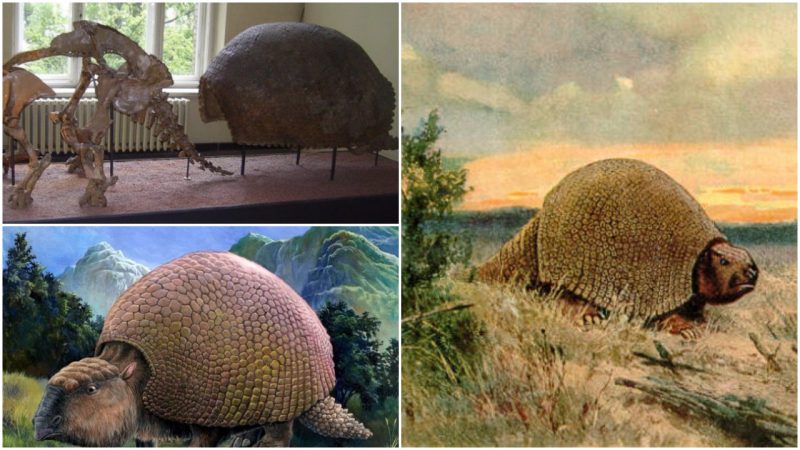An ancestor of the armadillo, a giant armored mammal of the subfamily Glyptodontidae, was roughly the same size and weight as a Volkswagen Beetle. Measured at 11 feet in length, 4.9 feet in height, and a weight of up to 2 tons, they were one of the largest and most fascinating mammals to ever walk the Earth.
Known as the Glyptodon, the massive armadillo lived during the Pleistocene epoch, which meant it co-existed with early humans. Those humans made the Glyptodon a hunting target, to its misfortune.
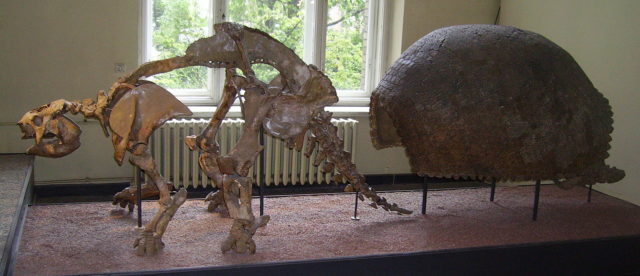
The mammal originated in South America, and its remains have been found in different places on the continent, such as Argentina, Brazil, and Uruguay. According to recent discoveries, Bolivia, Paraguay, and western Uruguay were home to it as well.
The Glyptodon remains found in Brazil were the larger of the species. However, due to lack of morphological and taxonomic knowledge, some of the species related to Glyptodon can’t be identified with any certainty.
Glyptodon’s most interesting features were its rounded, bony shell, giving the mammal the appearance of a giant turtle, and its tail armor with a ring of bones for protection. The bone ring made the tail not only strong but mobile, which rendered it a powerful weapon.
As for the shell, which is composed out of more than one thousand 2.5 cm-thick scutes, each Glyptodon had a unique osteoderm pattern and type.
Although they were compared to giant turtles, Glyptodons weren’t able to withdraw their heads inside their shells. But that didn’t make their heads defenseless. They had a bony cap on the top of their skulls.
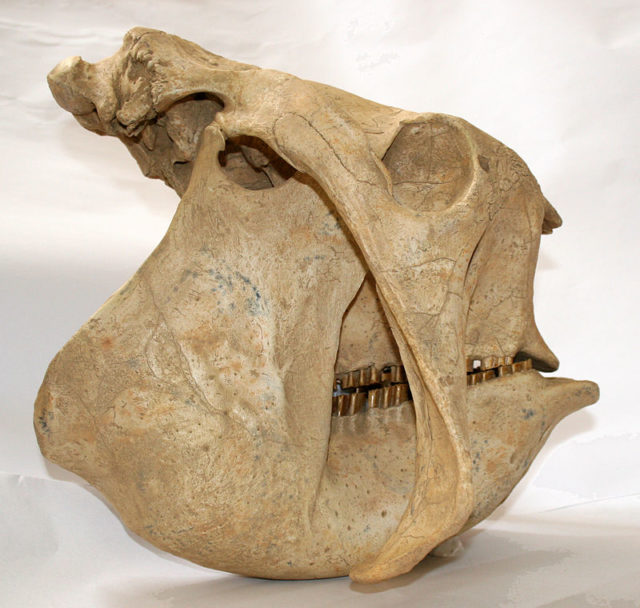
Although it’s believed that humans were responsible for the extinction of the Glyptodon, two of its main groups could have vanished due to their feeding habits. The larger group, known as the post-Miocene glyptodonts, were bulk feeders, while the smaller ones, such as the earlier Miocene glyptodonts, were more selective feeders. According to their jaw morphology, it’s presumed that in general, Glyptodons were herbivores. They had a well-developed mouth, along with a mobile neck. Grazing near rivers and lakes, the Glyptodons’ diet mostly consisted of trees and grass. Climate changes could have driven down this species’ numbers. Although, interestingly, they could survive on less food than other mammals of similar size.
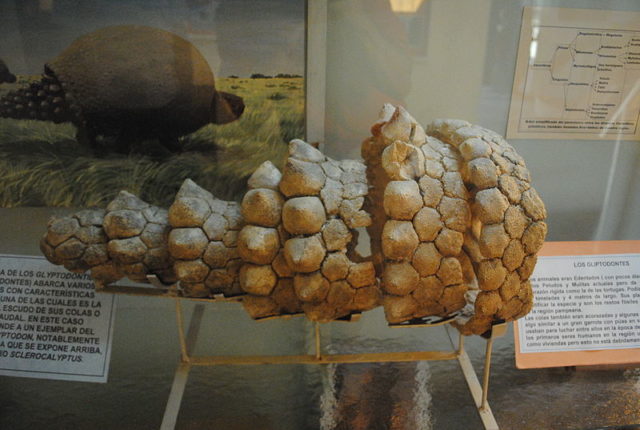
While some of them lived in forested, warm, and humid areas, others were accustomed to open, cold areas with grasslands. It’s presumed that the mammal also inhabited the southwestern part of the Amazon basin, due to the range of climates it could cope with.
Another assumption is that, with the rising of the volcanic isthmus of Panama, Glyptodons were forced to migrate into Central America, as far north as Guatemala, while another genus known as Glyptotherium inhabited the southern region of modern America, approximately 2.5 million years ago.
It’s believed that humans living at the time were actually the ones who brought Glyptodons to extinction. According to some evidence, hunters killed the mammals in order to live within their shells or use them as shelters during adverse weather.
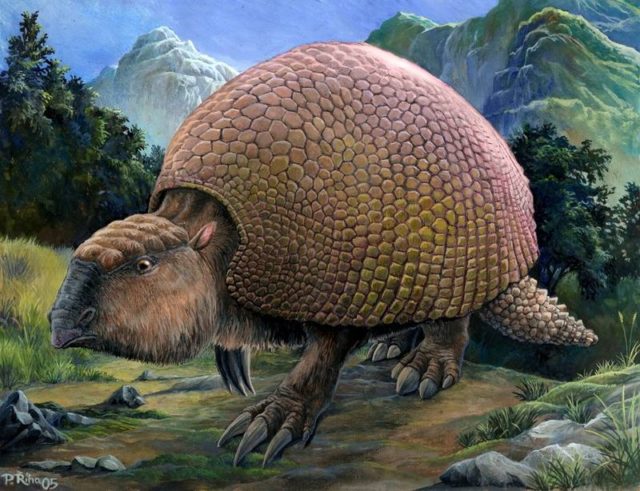
However, other evidence indicates that some of Glyptodon’s relatives survived until the Early Holocene, and existed together with humans at the for a minimum of 4,000 years. These relatives of Glyptodon, known as Doedicurus, vanished due to climate changes and anthropogenic causes.
Glyptodons were just another natural wonder that wasn’t fortunate enough to survive and coexist with humans for a long period.
